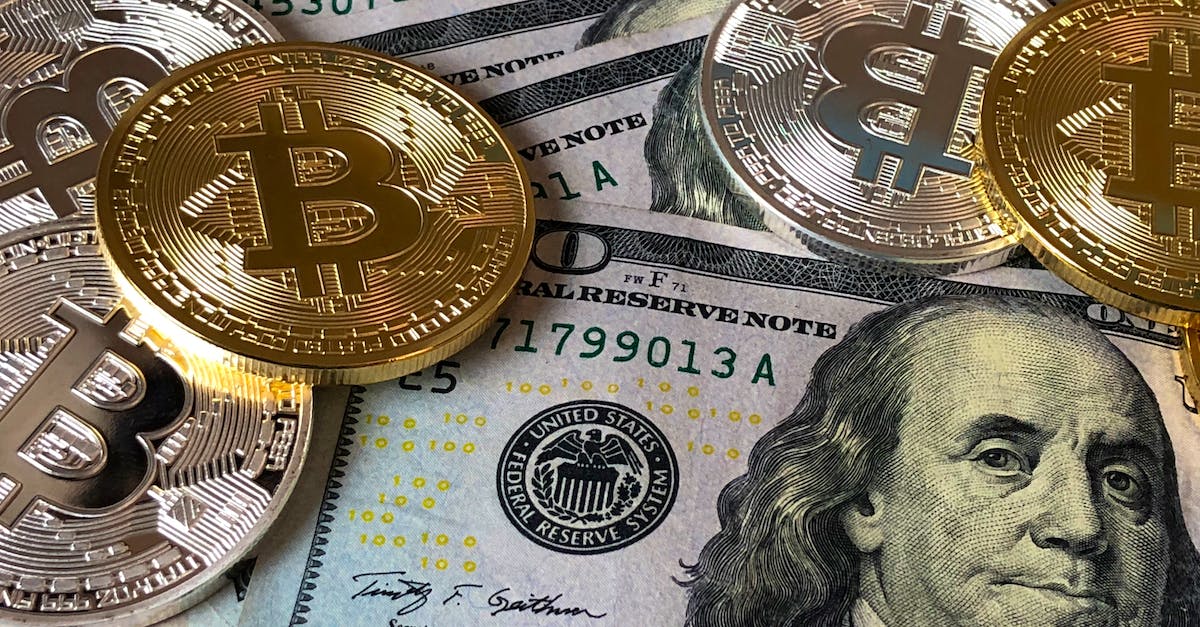Are you ready to dive into the exciting world of cryptocurrency investments? As we approach 2024, it’s crucial to stay ahead of the game and understand the leading trends shaping the industry. In this article, we’ll explore the key cryptocurrency investment trends that are set to dominate the market in the coming year. From the rise of decentralized finance (DeFi) to the growing interest in non-fungible tokens (NFTs), we’ll delve into the opportunities and risks that lie ahead. So, fasten your seatbelt and get ready to explore the future of cryptocurrency investments in 2024.
The world of cryptocurrency is constantly evolving, and 2024 is no exception. One of the most significant trends shaping the industry is the explosive growth of decentralized finance (DeFi). With DeFi, traditional financial intermediaries are being replaced by smart contracts on the blockchain, allowing for more efficient and transparent financial transactions. From decentralized exchanges to lending platforms and yield farming, DeFi offers a wide range of investment opportunities for those willing to embrace this new paradigm.
Another trend that is gaining momentum in the cryptocurrency space is the rise of non-fungible tokens (NFTs). NFTs have taken the art and collectibles world by storm, offering a unique way to buy, sell, and trade digital assets. From digital art and music to virtual real estate and gaming items, NFTs have opened up a whole new world of possibilities for investors. However, with this new frontier comes risks and challenges that investors must navigate carefully.
In the next section, we’ll dive deeper into the world of decentralized finance (DeFi) and explore the various investment opportunities it presents. So, buckle up and get ready to discover the leading cryptocurrency investment trends of 2024.
The Rise of Decentralized Finance (DeFi)
Decentralized Finance (DeFi) is one of the most notable trends in the cryptocurrency investment landscape, and it is expected to continue its exponential growth in 2024. DeFi refers to the use of blockchain technology and smart contracts to create decentralized financial applications that remove the need for traditional intermediaries like banks.
Why is DeFi gaining so much traction?
DeFi offers a range of benefits and opportunities that traditional finance simply cannot provide. Here are a few reasons why DeFi has gained so much traction:
- Financial Inclusion: DeFi allows anyone with an internet connection to access financial services, regardless of their location or socioeconomic background. This is a game-changer for the billions of unbanked individuals around the world who have been excluded from traditional financial systems.
- Permissionless: Unlike traditional financial systems, which often require individuals to go through a lengthy and cumbersome process to gain access, DeFi platforms are open and permissionless. You can interact with DeFi applications without needing approval from any centralized authority.
- Increased Transparency: All transactions and contracts on DeFi platforms are recorded on the blockchain, making them transparent and verifiable. This transparency reduces the risk of fraud and enhances trust among participants.
What are the investment opportunities in DeFi?
DeFi offers a wide range of investment opportunities that can potentially generate significant returns. Here are a few notable investment avenues within the DeFi ecosystem:
- Decentralized Exchanges (DEXs): DEXs allow users to trade cryptocurrencies directly from their wallets, without the need for an intermediary. These platforms offer greater liquidity, lower fees, and increased privacy compared to traditional exchanges.
- Lending and Borrowing Platforms: DeFi lending platforms enable individuals to lend their crypto assets and earn interest, while borrowers can access funds without the need for a traditional credit check. This opens up a new world of possibilities for income generation and accessing capital.
- Yield Farming: Yield farming involves staking or lending your cryptocurrencies on DeFi platforms to earn additional tokens as rewards. This strategy allows investors to maximize their returns by taking advantage of various incentives offered by different platforms.
Exploring the Opportunities and Risks of DeFi
As an investor in the exciting world of cryptocurrency, it’s crucial to stay informed about the latest trends and opportunities. One such trend that has been grabbing the attention of investors worldwide is decentralized finance (DeFi).
DeFi is revolutionizing traditional financial systems by using blockchain technology and smart contracts to create decentralized applications. By eliminating the need for intermediaries, DeFi platforms offer financial inclusion, permissionless access, and increased transparency. These factors have made it an attractive option for investors looking to diversify their portfolio.
One of the most significant advantages of DeFi is the wide range of investment opportunities it offers. Let’s take a closer look at some of them:
1. Decentralized Exchanges (DEXs): DEXs are platforms that allow users to trade cryptocurrencies directly with each other without the need for a central authority. They eliminate the risks associated with centralized exchanges, such as hacks and theft. Additionally, DEXs provide users with greater control over their funds and protect their privacy.
2. Lending and Borrowing Platforms: DeFi has opened up new avenues for individuals to lend and borrow digital assets. These platforms connect lenders with borrowers, enabling them to earn interest on their holdings or obtain funds for various purposes. By bypassing traditional financial institutions, DeFi lending and borrowing platforms offer flexibility, faster transactions, and potentially higher returns.
3. Yield Farming: Yield farming involves lending or depositing funds into DeFi protocols in exchange for additional tokens or rewards. This farming technique allows investors to maximize their earnings by taking advantage of various incentives provided by DeFi protocols. However, it’s important to note that yield farming can carry its own set of risks, such as smart contract vulnerabilities and market volatility.
While DeFi presents exciting opportunities, it’s essential to understand the risks associated with this nascent technology. Some of the key risks to consider include:
- Smart Contract Vulnerabilities: DeFi applications are built on smart contracts, which are prone to bugs and vulnerabilities. A single coding flaw can potentially expose investors’ funds to security breaches.
- Liquidity Risks: DeFi platforms heavily rely on liquidity providers, and any sudden downturn or lack of liquidity in the market can significantly impact the performance of these platforms.
Lending Platforms and Yield Farming in DeFi
In the world of decentralized finance (DeFi), lending platforms and yield farming have emerged as key avenues for investors to maximize their earnings. These innovative concepts harness the power of blockchain technology and smart contracts to create new opportunities within the financial ecosystem. Let’s explore how lending platforms and yield farming work and how you can benefit from them.
Lending Platforms
Lending platforms within the DeFi ecosystem allow individuals to lend or borrow cryptocurrencies directly from one another, without the need for intermediaries such as banks. Through these platforms, you can lend your idle funds to borrowers and earn interest on your holdings. Alternatively, if you need funds, you can borrow cryptocurrencies by providing collateral in the form of other digital assets. Lending platforms provide a win-win situation for lenders and borrowers, offering attractive interest rates and bypassing the stringent requirements of traditional financial institutions.
Key benefits of lending platforms in DeFi:
- Higher Interest Rates: Lending platforms often offer significantly higher interest rates compared to traditional savings accounts.
- Global Accessibility: These platforms operate on a decentralized network, providing global access to borrowers and lenders from all corners of the world.
- Automation and Transparency: Smart contracts automate the lending process, ensuring trust and transparency between lenders and borrowers.
- Diversification: By lending your funds across various platforms, you can diversify your investment and mitigate risk.
Yield Farming
Yield farming, also known as liquidity mining, is another lucrative opportunity within the DeFi space. In yield farming, users provide liquidity to decentralized exchanges (DEXs) by depositing their cryptocurrencies into liquidity pools. In return, users earn rewards in the form of additional tokens provided by the protocol. These rewards can be claimed periodically or reinvested to compound your earnings further.
Key benefits of yield farming in DeFi:
- Passive Income: Yield farming allows you to generate passive income by simply providing liquidity and earning rewards on your holdings.
- Token Incentives: Projects often incentivize users with their native tokens, which can potentially appreciate in value over time.
- Flexibility: Yield farming allows you to choose from a wide range of protocols and pools, providing the flexibility to optimize your returns.
- Opportunity for High Returns: With careful research and strategic farming, investors have the potential to earn high returns on their investments.
Decentralized Exchanges: The Future of Trading
Decentralized exchanges (DEXs) are becoming the game-changer in the world of cryptocurrency trading. Unlike traditional centralized exchanges, DEXs operate on blockchain technology, ensuring transparency, security, and censorship resistance. With the rise of decentralized finance (DeFi), DEXs are taking center stage as the future of trading in the crypto space.
One of the key advantages of DEXs is that they allow you to maintain control of your funds. With centralized exchanges, you often have to deposit your funds into a third-party platform, relinquishing control and putting your assets at risk. DEXs, on the other hand, enable peer-to-peer transactions without the need for intermediaries. This means that you retain ownership of your funds throughout the trading process, reducing the risk of hacks or theft.
Another benefit of DEXs is the enhanced privacy they offer. While centralized exchanges often require you to undergo a lengthy verification process, DEXs allow you to trade anonymously. This not only protects your personal information but also provides you with a sense of security and privacy in an increasingly surveilled digital landscape.
Furthermore, DEXs offer greater liquidity by leveraging automated market-making algorithms. These algorithms enable efficient trading by matching buy and sell orders automatically, ensuring that you can trade your assets seamlessly. With the increasing adoption of DEXs, liquidity is steadily improving, making decentralized exchanges a viable option for both small and large-scale traders.
Additionally, decentralized exchanges embrace the philosophy of decentralization, which aligns with the core principles of cryptocurrencies. By removing the need for intermediaries and centralized controls, DEXs enable a more inclusive and democratized financial system. Anyone, regardless of their geographic location or financial background, can participate in trading on DEXs. This opens up opportunities and levels the playing field for individuals around the globe.
Decentralized exchanges are the future of trading in the crypto world. Their advantages, including increased control over funds, enhanced privacy, improved liquidity, and the promotion of decentralization, make them a compelling option for both experienced traders and newcomers alike. As the crypto space continues to evolve, embracing DEXs provides you with a glimpse into the decentralized future of finance.
The Growing Interest in Non-Fungible Tokens (NFTs)
Non-Fungible Tokens (NFTs) have become a major trend in the cryptocurrency space, capturing the attention of investors and collectors alike. NFTs are unique digital assets that represent ownership or proof of authenticity of a specific item or piece of content. Unlike cryptocurrencies such as Bitcoin or Ethereum, which are fungible and can be exchanged on a one-to-one basis, NFTs cannot be replicated or substituted.
The popularity of NFTs has skyrocketed in recent years, with sales reaching astonishing figures. In 2021 alone, NFT sales amounted to $2.5 billion according to data from DappRadar. This surge in interest can be attributed to several factors:
- Art and Collectibles: NFTs have brought a new level of digitization to the art world. Artists and creators can now sell and authenticate their digital artwork through NFTs, revolutionizing the way art is bought and sold. Additionally, NFTs have opened up new opportunities for collectors to own unique pieces of art and memorabilia in the digital realm.
- Sports and Entertainment: NFTs have also made their way into the sports and entertainment industries. Athletes and celebrities are now creating and selling digital collectibles, such as trading cards or virtual merchandise, through NFT marketplaces. These digital assets provide fans with a new way to engage with their favorite stars and show their support.
- Virtual Real Estate: Virtual worlds and metaverses have gained traction, and NFTs are playing a crucial role in this evolution. NFTs can represent ownership of virtual land, virtual real estate, and even virtual avatars. As more people delve into virtual experiences, the demand for NFTs related to virtual assets is expected to grow.
The attraction towards NFTs lies in their uniqueness, scarcity, and proof of ownership. Collectors and investors are drawn to the idea of owning one-of-a-kind digital assets and being part of a vibrant and innovative community. However, it’s important to note that the value of NFTs can be highly speculative, and it’s crucial to do thorough research and exercise caution before making any investments.
As the cryptocurrency market continues to evolve and mature, NFTs are likely to remain as a prominent investment trend. The combination of digital ownership, scarcity, and cultural significance has created a perfect storm for the growth of this market.
NFTs: A New Asset Class
As the cryptocurrency market continues to evolve, one trend capturing the attention of investors is the rise of Non-Fungible Tokens (NFTs). NFTs are unique digital assets that represent ownership or proof of authenticity of a specific item or piece of content.
NFTs have gained significant popularity in recent years, particularly in the art, sports, and entertainment industries. Artists, athletes, and celebrities are harnessing the power of NFTs to revolutionize the way art is bought and sold, provide new opportunities for collectors, and offer fans an exciting new way to engage with their favorite stars.
One of the key features that sets NFTs apart is their uniqueness. Unlike cryptocurrencies such as Bitcoin or Ethereum, which are fungible and can be exchanged on a one-to-one basis, each NFT is distinct and cannot be replicated. This uniqueness adds value and scarcity to NFTs, making them highly sought after by collectors and enthusiasts.
In addition to their uniqueness, NFTs offer transparency and security. Blockchain technology ensures that each transaction associated with an NFT is recorded on a public ledger, providing a transparent and tamper-proof history of ownership. This level of transparency builds trust and reduces the risk of fraud or counterfeiting.
Furthermore, NFTs provide a new avenue for artists and creators to monetize their work. By tokenizing their artwork or creations, artists can sell limited editions or even fractional ownership through NFTs. This has opened up new revenue streams for artists, allowing them to reach a global audience and receive direct financial support for their work.
It’s important to note that the value of NFTs can be volatile, and investing in them carries a certain level of risk. However, with careful research and understanding, NFTs can be a fascinating and potentially lucrative investment opportunity for those interested in the intersection of art, technology, and culture.
NFTs have emerged as a new asset class within the cryptocurrency space. Their uniqueness, transparency, and ability to empower artists make them an exciting trend to watch in the coming years. Whether you’re a collector, an artist, or an investor, exploring the world of NFTs can provide diverse opportunities and a deeper appreciation for the intersection of art and technology.
Investing in Digital Art and Music NFTs
When it comes to the leading cryptocurrency investment trends for 2024, one area that is attracting significant attention is the world of digital art and music non-fungible tokens (NFTs). NFTs have established themselves as a game-changer in the art and entertainment industries, transforming the way we perceive, buy, and sell creative works.
The Rise of Digital Art NFTs
Digital art NFTs have disrupted the traditional art market, offering artists new ways to showcase and monetize their work. These unique digital assets represent ownership and authenticity of a specific piece of artwork. They provide artists with a direct connection to their audience and allow for the creation of limited edition or one-of-a-kind pieces.
By leveraging blockchain technology, digital art NFTs offer transparency and security in the art market. Every transaction is recorded on a decentralized ledger, ensuring a tamper-proof history of ownership. This traceability creates trust and eliminates counterfeit concerns, providing peace of mind for collectors and investors.
The value and scarcity of digital art NFTs have attracted a growing number of art enthusiasts and collectors. These digital assets cannot be replicated, making each piece truly unique. With the surge of interest in digital art, the market for NFTs has experienced tremendous growth, with some artworks selling for millions of dollars at auctions.
Exploring Music NFTs
Similar to digital art, music NFTs have opened up new possibilities for musicians and creators. These tokens represent ownership rights or exclusive access to music tracks, albums, or even virtual concerts. With traditional revenue streams for musicians, such as live performances, being affected by the pandemic, music NFTs offer an alternative avenue for artists to generate income and connect with fans.
Through music NFTs, musicians can offer limited edition songs or albums, unique remixes, or even personalized experiences. Fans can own a piece of their favorite artist’s work, creating a deeper level of engagement and support for the music they love.
The music NFT market has seen impressive growth, with artists from various genres, including well-known names, embracing this new opportunity. Notable sales and collaborations have taken place, showcasing the potential of music NFTs as a valuable investment and promotional tool for artists.
Virtual Real Estate and Gaming NFTs: The Future of Gaming
When it comes to cryptocurrency investment trends in 2024, one area that is gaining significant attention is virtual real estate and gaming NFTs. As technology continues to advance, virtual worlds and online gaming have become increasingly immersive and popular. This has led to the emergence of a new market for digital land and in-game assets, which can be bought, sold, and traded using blockchain-based NFTs.
Virtual Real Estate: Owning virtual land may seem like a foreign concept to some, but it has become a lucrative investment opportunity. Just like in the real world, virtual land can be developed, rented, or sold to other players within the game. In fact, the value of some virtual properties has skyrocketed, with transactions reaching millions of dollars. The scarcity and uniqueness of these virtual plots make them highly desirable for both gamers and investors alike.
Gaming NFTs: In addition to virtual land, non-fungible tokens have also revolutionized the in-game asset market. NFTs allow gamers to own unique and verifiable digital items such as weapons, avatars, skins, and more. These assets can be used within the game or traded with other players, providing a new level of customization and rarity. With blockchain technology ensuring the authenticity and ownership of these items, the market for gaming NFTs has exploded.
The Future of Gaming: The integration of virtual real estate and gaming NFTs is shaping the future of gaming as we know it. Gamers are no longer limited to traditional in-game purchases, but can now invest in digital land and assets that hold real-world value. This opens up a world of possibilities for game developers, who can monetize their creations by allowing players to buy, sell, and trade within their virtual worlds.
The potential for growth in the virtual real estate and gaming NFT market is immense. As technology continues to advance and more games adopt blockchain integration, we can expect to see even more innovative opportunities for investment and gameplay. Whether you are a passionate gamer or a savvy investor, keeping an eye on these cryptocurrency investment trends in 2024 will be key to staying ahead in the rapidly evolving world of gaming.
Navigating the Risks and Challenges of NFT Investments
While Non-Fungible Tokens (NFTs) have gained immense popularity and are seen as an exciting investment opportunity, it’s essential to be aware of the risks and challenges associated with this emerging asset class. As with any investment, thorough research and careful consideration are crucial to making informed decisions. Here are some key points to keep in mind when navigating the world of NFT investments:
1. Volatility and Market Fluctuations: Cryptocurrencies, including NFTs, are known for their price volatility. The value of NFTs can experience significant fluctuations, which can result in both substantial gains and losses. It is essential to understand that NFT prices can be influenced by several factors, including market demand, hype, and the reputation of the artist or creator. Conducting thorough market analysis and diversifying your NFT portfolio can help mitigate the impact of market volatility.
2. Counterfeit and Authenticity Concerns: One of the core value propositions of NFTs is their ability to provide proof of ownership and authenticity. However, there have been instances of counterfeit NFTs in the market. To minimize the risk of purchasing counterfeit tokens, it’s crucial to verify the credibility and reputation of the marketplace and the creator. Conducting due diligence and relying on reputable platforms can help ensure the authenticity of your NFT investments.
3. Regulatory and Legal Considerations: The regulatory landscape surrounding NFTs is continually evolving. Government bodies worldwide are still grappling with how to classify and regulate these digital assets. As an investor, it’s essential to stay informed about the legal and regulatory developments pertaining to NFTs in your jurisdiction. Ensure compliance with any applicable rules and seek legal advice if needed to mitigate potential legal risks.
4. Technological Risks: NFTs are built on blockchain technology, which is relatively new and evolving. While blockchain provides robust security measures, it’s not entirely immune to technological risks such as hacking or smart contract vulnerabilities. Staying informed about the latest security practices and choosing reputable blockchain platforms can help minimize these risks.
Conclusion
As we look ahead to the future of cryptocurrency investments in 2024, it is clear that Non-Fungible Tokens (NFTs) are set to play a significant role. The rise of NFTs in the digital art and music industries has already disrupted traditional markets, providing new opportunities for artists and musicians to monetize their work. Additionally, the emergence of virtual real estate and gaming NFTs is reshaping the gaming industry, allowing gamers to invest in assets with real-world value and offering monetization possibilities for developers.
However, it is important to acknowledge the risks and challenges associated with NFT investments. Volatility and market fluctuations, counterfeit concerns, regulatory considerations, and technological risks are all factors to be aware of. As the market continues to evolve, it will be crucial to stay informed and make informed investment decisions.
Nevertheless, the immense potential for growth in the virtual real estate and gaming NFT market cannot be denied. With advancing technology and increasing adoption of blockchain integration in games, the future looks promising for those who are willing to navigate the challenges and seize the opportunities presented by these emerging trends.
Frequently Asked Questions
1. What are Non-Fungible Tokens (NFTs)?
NFTs are unique digital assets that use blockchain technology to verify their ownership and authenticity. Unlike cryptocurrencies like Bitcoin, NFTs cannot be exchanged on a one-to-one basis, as each NFT has its own distinct value and characteristics.
2. How have NFTs disrupted the traditional art market?
NFTs have revolutionized the art market by allowing artists to independently sell their digital creations, bypassing traditional intermediaries like galleries and auction houses. NFTs enable artists to retain more rights and earn royalties on future resales of their work.
3. What is virtual real estate in the context of NFTs?
Virtual real estate refers to land or property that exists within digital worlds, such as virtual reality games or metaverses. NFTs are used to represent ownership of these virtual properties, allowing users to buy, sell, and trade them.
4. How do NFTs benefit gamers and game developers?
NFTs provide gamers with true ownership of in-game assets, which can be bought, sold, and traded. This allows gamers to monetize their virtual investments and have a more immersive and interactive gaming experience. Game developers can also generate revenue by selling limited edition items or virtual land as NFTs.
5. What are the risks associated with NFT investments?
Some risks of NFT investments include market volatility, as the value of NFTs can fluctuate greatly. There is also the risk of counterfeit NFTs or authenticity concerns. Regulatory and legal considerations may also arise, and there are technological risks associated with the security and stability of blockchain platforms.
6. What is the future of the virtual real estate and gaming NFT market?
The virtual real estate and gaming NFT market has enormous potential for growth. As technology advances and more games embrace blockchain integration, the market will continue to expand. This trend will benefit gamers who want to invest in assets with real-world value and provide monetization opportunities for game developers.








